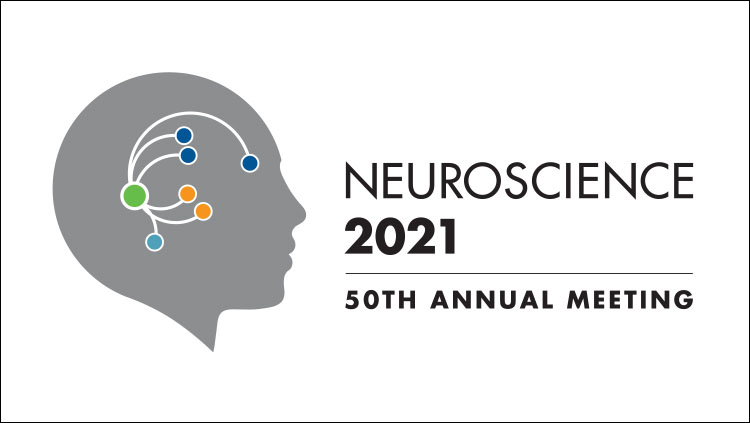Q&A: NABR, FBR President Pushes Back Against Animal Research Misinformation

Matthew Bailey
Matthew R. Bailey is the president of the Foundation for Biomedical Research (FBR) and National Association for Biomedical Research (NABR). He is a government relations and communications professional with more than 20 years of experience in Washington, D.C. He played a key role in the bipartisan passage of the federal Animal Enterprise Terrorism Act (18 U.S.C. 43) in 2006. As president of FBR and NABR he educates policymakers, the public, and the media about the critical role of animals in biomedical research; and advises academic and corporate research institutions on crisis management issues related to animal rights targeting.
Neuroscience Quarterly (NQ): The involvement of animals in biomedical research has been controversial for a long time. Considering the COVID-19 pandemic, how has the public’s general view of animals in research changed?
Matthew Bailey (MB): Americans remain divided over support of animal research and testing. My colleagues and I at FBR set out to answer just this: whether the pandemic has shaped public opinion about the role of animals in medical research. We commissioned four polls in 2020 and 2021 to gauge support for the humane use of animals in biomedical research, education, and testing in light of the coronavirus pandemic. A majority of participants – 57% – in FBR’s March 2021 poll said the humane use of animals to develop lifesaving medicines for people and pets is morally acceptable when there is no other effective way to do the research and no unnecessary suffering for the animals. This finding indicates the pandemic has not triggered a significant change of public opinion about animal research and this continues to be a topic where Americans are relatively divided.
A majority of participants – 57% – in FBR’s March 2021 poll said the humane use of animals to develop lifesaving medicines for people and pets is morally acceptable when there is no other effective way to do the research and no unnecessary suffering for the animals.FBR’s latest polling is nevertheless informative when it comes to messaging about animal research. Our poll findings indicate the general public is more likely to support animal research and testing when they are well-informed about the role of animal models in the development of medical treatments and vaccines and also when decision makers and influential leaders publicly support animal research. In October 2020, 64% of respondents supported the humane use of animals in biomedical research, education, and testing after learning about Dr. Fauci’s comments on the importance of animal models from the lectern of the White House. This is 15 points higher than the 49% who supported the humane use of animals in biomedical research, education, and testing in the same poll before having background on Dr. Fauci’s remarks about animal research playing an important role in helping understand whether or not a coronavirus vaccine will be effective and safe to use.
Where we really noticed a difference in our latest poll is a group we call the “moveable middle.” FBR’s poll shows that only 18% of Americans believe medical research with animals is morally wrong compared to the 44% of Americans in Gallup’s 2021 morality poll. Both polls measured the views of 1,000+ respondents at least 18 years of age across the United States. However, one striking difference is that the Gallup poll asked a very simple question about the morality of animal testing, whereas FBR’s poll added more context to several questions. Only 3% of respondents in Gallup’s 2021 moral acceptability poll said they were undecided about the issue when asked the simpler question about the morality of animal testing. In contrast, more than a third (34%) of respondents in FBR’s poll said they were undecided. This contrast suggests fewer Americans concretely believe animal research is morally wrong and are less certain about their opposition when presented with more facts. If you want a thoughtful response, ask a thought-provoking question.
NQ: Misinformation online is a problem that seems to have grown larger over the course of the pandemic. Can you share some specific falsehoods related to animal research you’ve encountered and how NABR and other organizations have tried to push back?
MB: We run into this a lot, actually. Opponents of animal research have an easy lie to sell whereas the research community has a more complex truth to explain. Near the onset of the pandemic, activists and their followers broadly claimed scientists skipped animal trials for COVID-19 vaccines before testing in humans began and further claimed that animal research did not contribute to the development of safe and effective vaccines. This is, of course, false. Outlets such as Reuters and USA Today fact-checked these claims and set the record straight about how animal research is a vital part of the vaccine, drug, and medical device development process.
Opponents of animal research have an easy lie to sell whereas the research community has a more complex truth to explain.We share our message about the benefits as many places as we can, including in op-eds in news outlets nationwide and on social media. FBR also combats misinformation about animal research through public education campaigns. Our popular “Perceptions vs Reality” brochure debunks many common myths surrounding this issue such as “Animal research is speciesism because it only benefits humans.” We know that animal research benefits animals, too, whether through the development of veterinary treatments at the pet clinic or vaccines for wildlife! Our “Perceptions vs Reality” video covers three major misconceptions: animal research is outdated, stem cell research will replace animal research in the near future, and animals are completely different than humans. Our educational materials are in the hands of millions of Americans. Tackling falsehoods includes ensuring legislators are educated on the issue too. This is where the National Association for Biomedical Research comes in play. NABR focuses its efforts on public policy and pushes back against animal activism in the halls of Congress.
Our partners are crucial to helping us push back against misinformation. Without the countless folks and groups on our side, we wouldn’t have the success we’ve had with campaigns such as FBR’s “Love Animals? Support Animal Research!” where we explain how research involving animals helps treat pets and humans alike. This messaging demonstrates how it is possible to educate animal lovers about the importance of animal research, many of whom naïvely state they are opposed to animal testing. NABR reaches out to members of Congress and state legislators in partnership with member organizations to help them understand nuances in federal and state legislation that could be harmful to biomedical research.
NQ: What roles have animals played in the research leading to our successful COVID-19 vaccines, drugs, and other interventions?
MB: Two main roles stand out: a model to study how the virus and disease present in a living system and an ethical way to test new vaccines and drugs in preclinical trials. Animal models were behind the development of every COVID-19 vaccine, therapy, and drug approved for use in the United States. Research with rodents such as genetically modified mice, hamsters, rats, and non-human primates took place to understand how the coronavirus attacks the body. Ongoing research with animals is happening for SARS-CoV-2 and its variants. Second, animal research is key when scientists test experimental COVID-19 vaccines, drugs, and therapies for safety and efficacy measures. Animals really are the unsung heroes of the pandemic. Without them, advancements to combat COVID-19 would not have been possible.
There are many people to thank for these vaccines, but lab animal veterinarians, health care workers, scientists, vet techs, lab animals, and volunteers deserve a special round of applause.Scientists tested new mRNA vaccines by Pfizer/BioNTech and Moderna/NIH with mice, hamsters, and non-human primates to ensure they were safe for human clinical trials. Speaking of mRNA, these vaccines are the result of decades of research with animal models that started at the university level before government and the private sector built on these findings to develop safe, effective COVID-19 vaccines using the mRNA platform. There are many people to thank for these vaccines, but lab animal veterinarians, health care workers, scientists, vet techs, lab animals, and volunteers deserve a special round of applause. Their dedication and hard work helped get us to the point we are now.
In all my years in this field of work, animal research has seen an unprecedented level of news coverage in recent years. FBR has identified more than 3,000 mainstream articles that acknowledge the role of animals in coronavirus research since the onset of the pandemic. Visit www.fbresearch.org to learn more about animals play a role in successful COVID-19 vaccines and treatments.
NQ: Policymakers around the world continue to introduce new limitations on the use of animals in research. What can neuroscientists do to communicate the irreplaceable role animals currently play in their work?
MB: Neuroscientists can and should share how their work impacts the people and the animals they love. It’s important to emphasize the benefits of your research to the public. Animal research is not an issue typically discussed at the dinner table of average Americans, so there is a basic level of connecting the dots that must occur. This may include explaining how the research is meant to combat a specific disease through an outcome of a cure or treatment. Emphasize the people who will benefit from this research, whether it be those living with Type 2 diabetes, Alzheimer's, or Parkinson’s disease, or a patient with an incurable form of cancer. Extrapolating the potential benefits of research that adds to the scientific body of knowledge is also important. Dispelling misconceptions about animal care and providing information on rigorous and humane animal research protocols, practices, and oversight at the federal and state levels and within the institution is equally as critical. Finally, explaining the limitations of so-called “alternative methods” is advisable whenever possible. While computer models and organs-on-chips can be applied in certain areas like toxicology and early screening of drug compounds, in many other areas of basic research and discovery they simply are not capable of providing the same level of data that a full living system does.
Work with our experts at FBR and NABR to help communicate your message in a way that will resonate with the public, media, and lawmakers. Submit a letter to the editor of your local newspaper in support of animal research, provide your input in the comment sections of online articles and write to your members of Congress about the important role of research with animals for the work you conduct. Organize a virtual Hill visit with your congressional representative and senators. These just a few ways to push back against false narratives from animal activists.
Scientists have a unique perspective on their work that others can learn from. Discussing projects and research in simple terminology with family and friends who do not have backgrounds in science is a great place to start. The questions they ask may shape how you communicate about your work with those outside your immediate circle. People are more likely to support biomedical research if they understand the real-world benefits and are given the appropriate context about why the research is being done in the first place.



















